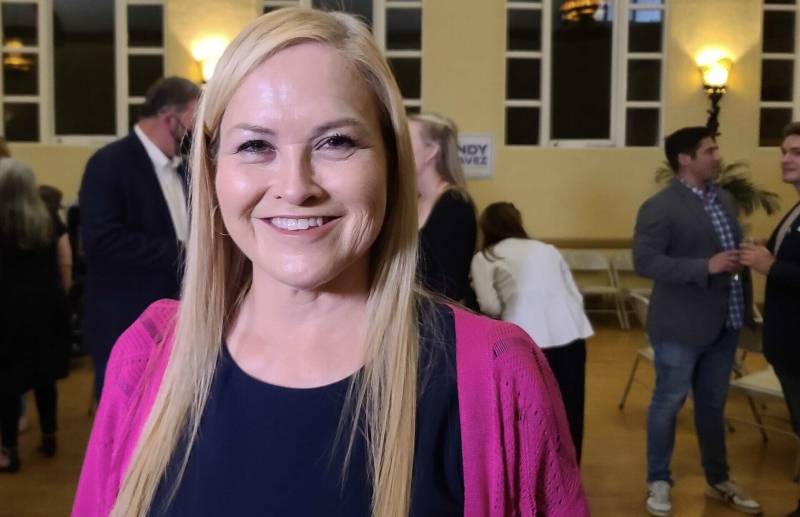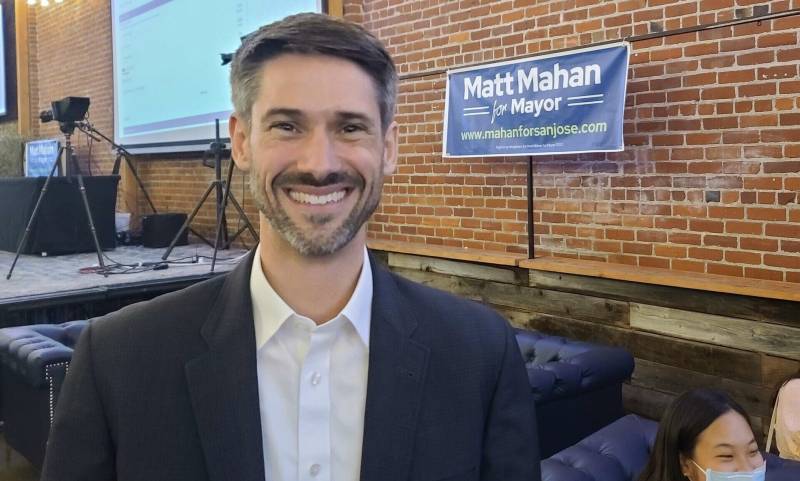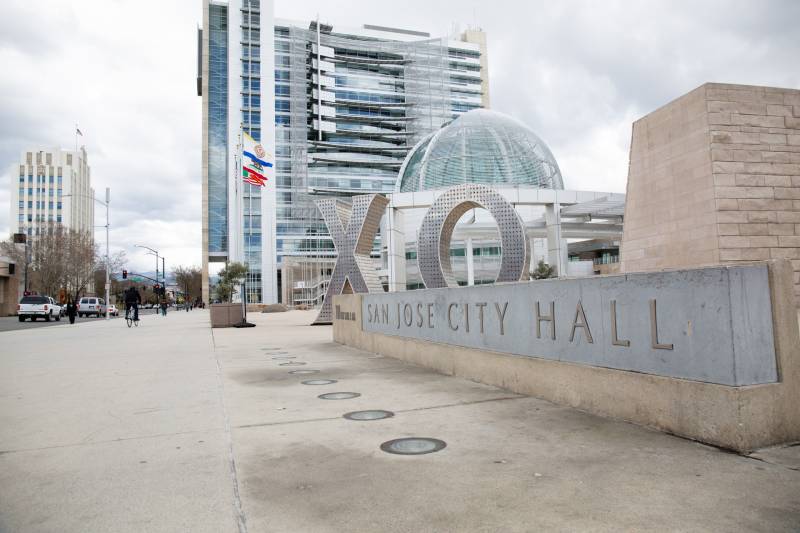As voting gets underway Monday in the runoff election for San José mayor, Santa Clara County Supervisor Cindy Chavez and San José City Council member Matt Mahan are hoping to convince voters that they can move city government in a new direction in the nation’s 10th-largest city.
The question of which candidate is better positioned to be a force for change has assumed a central role in the race to lead a city grappling with rising homelessness, lack of affordable housing and thinly staffed city departments like police and planning. In interviews with KQED, Mahan and Chavez laid out their immediate and long-term visions, with a recent amendment to the city charter giving the winner of this race an opportunity to hold office for a decade.
Chavez has served in local government for most of the last quarter-century, first winning election to the San José City Council in 1998. Still, she has billed herself as a departure from current Mayor Sam Liccardo — who is supporting Mahan — by promising to bolster city staffing and to bring harmony to the council.
Mahan is a relative newcomer to San José politics, having won election to the Council in 2020 after a career in the tech industry. Liccardo and his business-aligned allies have spent heavily to back Mahan, but the first-term councilmember has run on a vow to shake up the city bureaucracy — in part by tying pay increases for city leaders, nearly all of whom are supporting Chavez, to progress on issues such as crime and homelessness.
With San José’s unhoused population rising 11% during the pandemic, Mahan has attacked Chavez’s focus on constructing permanent supportive housing with services and has instead advocated to house the unhoused in quick-build tiny homes known as emergency interim housing.
“If it's really a crisis, let's go after scalable, efficient solutions to get people indoors and then invest in the supportive services from mental health and addiction counseling to job training, job placement,” Mahan said. “We should be buying (homes) in bulk rather than what we do today, which is extremely incremental and still leans far too heavily on building brand-new apartments.”

But the tiny-home policy has still generated predictable pushback from residents who don’t want unhoused people in their neighborhoods. When the City Council voted in June on four new and expanded emergency interim housing sites, Mahan was one of two “no” votes, asking city staff to spend more time exploring an alternative to the site proposed in his council district.
Chavez has defended the county’s focus on building supportive housing, a policy funded through Measure A, a $950 million housing bond that was voted on in 2016 and that Chavez championed. And she has pointed to Santa Clara County’s smaller increase in homelessness compared to neighboring counties.
“The reason for that is we kept thousands of families from becoming homeless, and we kept moving our program forward,” she said. “We kept building and we kept putting people in housing.”
Chavez has honed in on the issue of police staffing in her attempt to tie Mahan with the current administration. Over the summer, she blamed Liccardo and Mahan for allowing “dangerously low staffing levels” in San José, which employs fewer officers than most cities of its size. Notably, the critiques came as San José’s Police Officers' Association, which has endorsed Chavez and spent heavily on her behalf, negotiated a new contract with the city.
Chavez has promised to hire 45 new officers every year, arguing that, regardless of contract talks, “if you live in San José, you know that when you dial 911, you're waiting longer than you should.
“That is all about how many people we have that can respond to calls for service,” she added. “We do not have enough police officers, period.”

Mahan said he will also work to increase staffing at the department, but said the financial limitations the city faces in hiring new employees can be traced back to overly generous health and retirement benefits for police that Chavez voted for as a councilmember in the early 2000s.
“We could hire hundreds of police officers if we didn't have the legacy of that accumulated debt,” Mahan said. “Let's not rewrite history here or promise something to the public that isn't realistic or fiscally responsible.”
The winner of the November 8 runoff faces a short runway to show results. Measure B, approved by city voters in June, will align future mayoral contests with presidential elections, beginning in 2024. San José’s mayor has few powers beyond that of a councilmember, but both candidates feel an urgency to show immediate results.
“People will see a difference in the number of homeless people that we see on the streets, because I think that if we're assertive about the programming that we're doing and we're collaborative with the county and the state and the federal government, that we're going to be able to not just move the dial on paper, but people will be able to see the difference almost right away,” Chavez said.
But the time pressure created by Measure B comes with a trade-off: The next mayor will be allowed to run for two additional terms after 2024, with the potential of holding office until early 2033. With construction of Google’s Downtown West development and the projected arrival of BART at Diridon Station, the city’s downtown stands to be transformed during the next administration.
“I believe over the course of 10 years, if we fully staff our planning department, streamline some of those permitting processes, speed up our inspections, become a more business-friendly city, we could see a downtown that attracts the investment in housing and jobs and transit that we need, which can be transformative for our entire city,” Mahan said.
